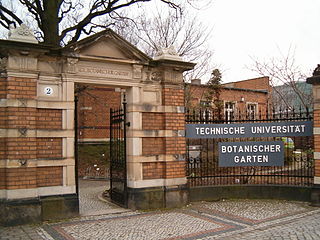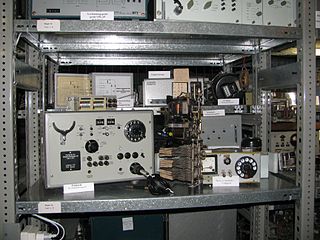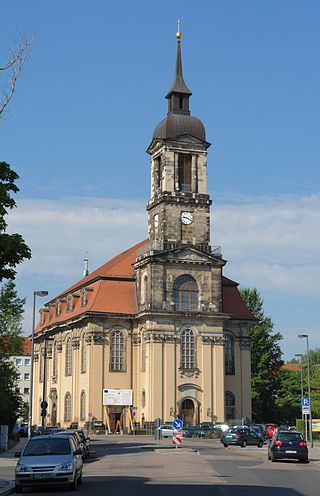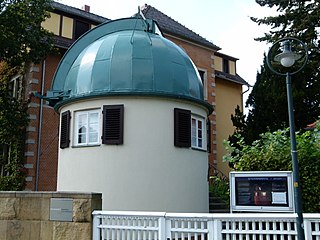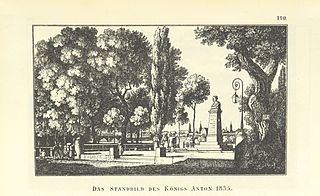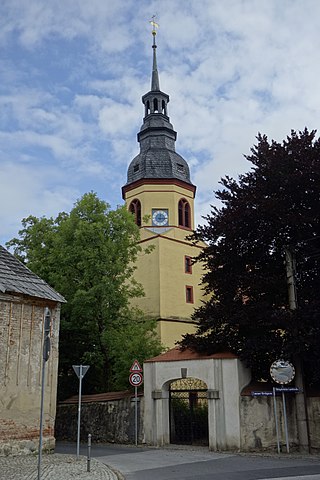100 Sights in Dresden, Germany (with Map and Images)
Legend
Premium Sights
Book tickets, guided tours and activities in Dresden.
Guided Free Walking Tours
Book free guided walking tours in Dresden.
Welcome to your journey through the most beautiful sights in Dresden, Germany! Whether you want to discover the city's historical treasures or experience its modern highlights, you'll find everything your heart desires here. Be inspired by our selection and plan your unforgettable adventure in Dresden. Dive into the diversity of this fascinating city and discover everything it has to offer.
Sightseeing Tours in DresdenActivities in DresdenThe Kulturpalast Dresden is a modernist building built by Wolfgang Hänsch during the era of the German Democratic Republic. It was the largest multi-purpose hall in Dresden when it opened in 1969, and was used for concerts, dances, conferences and other events. The building underwent several years of reconstruction beginning in 2012 and opened with a new concert hall in April 2017.
The Dresden Kreuzkirche is a Lutheran church in Dresden, Germany. It is the main church and seat of the Landesbischof of the Evangelical-Lutheran Church of Saxony, and the largest church building in the Free State of Saxony. It also is home of the Dresdner Kreuzchor boys' choir.
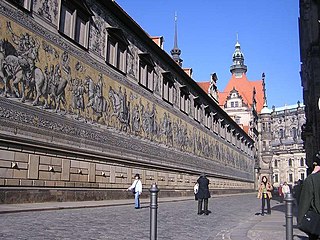
The Fürstenzug in Dresden, Germany, is a large mural of a mounted procession of the rulers of Saxony. It was originally painted between 1871 and 1876 to celebrate the 800th anniversary of the Wettin Dynasty, Saxony's ruling family. In order to make the work weatherproof, it was replaced with approximately 23,000 Meissen porcelain tiles between 1904 and 1907. With a length of 102 metres (335 ft), it is known as the largest porcelain artwork in the world. The mural displays the ancestral portraits of the 35 margraves, electors, dukes and kings of the House of Wettin between 1127 and 1904.
4. Neumarkt
The Neumarkt is a square and culturally significant section of central Dresden, Germany. The historic area was almost completely wiped out during the Allied bombing during the Second World War. After the war, Dresden fell under Soviet occupation, and later the communist German Democratic Republic, which rebuilt the Neumarkt area in socialist realist style and partially with historic buildings. However, huge areas and parcels of the place remained untilled. After the fall of Communism and German reunification, the decision was made to restore the Neumarkt to its pre-war look.
5. Hausmannsturm
The Hausmannsturm is the oldest part of Dresden Castle that still exists today and was started around 1400 in its lower parts. It is located on the north side of the building complex. The octagonal structure is crowned by a copper-covered Welsh hood and an open lantern with a top. With a height of 100.27 metres, the tower is one of the most striking buildings in Dresden and a popular vantage point.
6. Kunsthofpassage
The Kunsthofpassage is a passage consisting of five individual courtyards, in the Outer Neustadt in Dresden, starting in the house at Görlitzer Straße 25, and extending to Alaunstraße 70. This was designed according to plans by the architects MüllerMüller, Knerer and Lang, Heike Böttcher and Meyer Bassin and completed in 2001. The client is Ginkgo Projektentwicklung GmbH. As artists, Viola Schöpe, Annette Paul, André Tempel, Christoph Roßner, Arendt Zwicker and the stone sculptors Sandner and Matz were jointly responsible for the design of the outer facades.
7. Pfunds Molkerei
The Dresden dairy Gebrüder Pfund is a landmark in Dresden and is located in the Outer Neustadt district. The milk shop is best known for its original hand-painted tiles from Villeroy and Boch. In November 1997, it was entered in the Guinness Book of World Records as the "Most Beautiful Milk Shop in the World". Today, you can buy regional products such as cheese, wine and care products.
8. Church of Our Lady
The Frauenkirche is a Lutheran church in Dresden, the capital of the German state of Saxony. Destroyed during the Allied firebombing of Dresden towards the end of World War II, the church was reconstructed between 1994 and 2005.
Wikipedia: Frauenkirche, Dresden (EN), Website, Opening Hours, Facebook, Youtube
9. Statue of King John
The King Johann Monument is a bronze, six-metre-high equestrian statue of the Saxon King Johann on Dresden's Theaterplatz, which was created by Johannes Schilling from 1882 and unveiled in 1889. In the Baroque tradition, it stands as a point de vue at the intersection of the central axes of the Semperoper and the Sempergalerie.
10. Semperoper
The Semperoper is the opera house of the Sächsische Staatsoper Dresden and the concert hall of the Staatskapelle Dresden. It is also home to the Semperoper Ballett. The building is located on the Theaterplatz near the Elbe River in the historic centre of Dresden, Germany.
11. Historisches Grünes Gewölbe
The Green Vault is a museum located in Dresden, Germany, which contains the largest treasure collection in Europe. The museum was founded in 1723 by Augustus the Strong of Poland and Saxony, and features a variety of exhibits in styles from Baroque to Classicism. The Green Vault is named after the formerly malachite green-painted column bases and capitals of the initial rooms. It has some claim to be the oldest museum in the world; it is older than the British Museum, opened in 1759, but the Kunstkamera in St. Petersburg, Russia was opened in 1714 and the Vatican Museums date their foundation to the public display of the newly excavated Laocoön group in 1506.
12. Carl-Maria-von-Weber-Denkmal
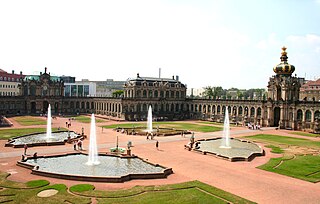
The Zwinger is a palatial complex with gardens in Dresden, Germany. Designed by architect Matthäus Daniel Pöppelmann, it is one of the most important buildings of the Baroque period in Germany. Along with the Frauenkirche, the Zwinger is the most famous architectural monument of Dresden.
13. Moreau-Denkmal
Jean Victor Marie Moreau was a French general who helped Napoleon Bonaparte rise to power, but later became his chief military and political rival and was banished to the United States. He is among the foremost French generals in military history.
14. Gemäldegalerie Alte Meister
The Gemäldegalerie Alte Meister in Dresden, Germany, displays around 750 paintings from the 15th to the 18th centuries. It includes major Italian Renaissance works as well as Dutch and Flemish paintings. Outstanding works by German, French, and Spanish painters of the period are also among the gallery's attractions.
15. Goldener Reiter
The Golden Horseman is the name given to the equestrian statue of Augustus the Strong on the Neustädter Markt in Dresden. It is located in the central axis of the main street and the Neustädter Wache. The Golden Horseman is considered the most famous monument in Dresden and is one of the most important sculptures of the Dresden Baroque. The statue shows Augustus the Strong, Elector of Saxony and King of Poland, riding as a Roman Caesar in armour in a north-easterly direction to the Polish kingdom on a courbedding stallion.
16. Albertbrücke
The Albert Bridge is the easternmost of the four Elbe bridges in Dresden's city centre, it was built in the 1870s. The 316-metre-long bridge is named after King Albert of Saxony. In GDR times, it was called the Bridge of Unity, commemorating the unification of the KPD and SPD (1946).
17. Gedenkstätte für die Opfer des 13. und 14. Februar 1945
The Municipal Heath Cemetery in Dresden is a municipal forest cemetery on the northern outskirts of the city with several memorials and groves of honour. Until 2015, the official wreath-laying ceremony for the victims of the bombing raids of 13 to 15 February 1945 took place every year at the Heidefriedhof. After the Soviet Garrison Cemetery established in 1945, it is the youngest cemetery in Dresden.
18. Leipziger Bahnhof
Leipzig station was the first railway station in Dresden, the capital of Saxony. It was located not far from today's Dresden-Neustadt station in the Leipziger Vorstadt and was the terminus of the first German long-distance railway Leipzig–Dresden, which was inaugurated in 1839.
19. Landeskommando Sachsen
The state command of Saxony in the Graf Stauffenberg barracks in the Dresden Albertstadt is responsible for the cooperation of the Bundeswehr with the civilian authorities in Saxony. Around 50 active soldiers and 15 civilian employees are employed by the state command and the branch offices in Marienberg, Leipzig and Frankenberg. With its reservists in 19 connecting commands, the state command Saxony keeps close contact with counties, independent cities and the state directorate. In addition to the crisis management, the maintenance of contact with the military crisis operations of the neighboring countries is one of the tasks. In addition, the state command for the Host Nation Support, the care of foreign troops, which are guests at German territory, is responsible. An important part of the tasks of the state command is the reservist work. The state command was established in 2007. First it was subordinate to the military area command III, from 2013 the Bundeswehr's territorial tasks command until the subordination to the Bundeswehr's territorial management command in Berlin moved.
20. Technische Sammlungen Dresden
The Technical Collections Dresden are the Technikmuseum and Science Center of the state capital Dresden. In an earlier camera factory, children, adolescents and families find many opportunities to experiment and explore nature phenomena, foundations of science and the latest achievements of technology. With constant exhibitions on the history of photography and film, computer and other media technology as well as special exhibitions on photo art and current technology research, the technical collections promote dealing with the technical foundations of the present. The special feature is the combination of technology and industrial history with science and current research. The technical collections are the country of adventure, public forum for technology research, museum of information society and podium for photography and animated film in one. Cooperations play an important role, for example with the TU Dresden, Dresden-Concept and other partners from science and research.
21. Sowjetischer Garnisonfriedhof
The Soviet Garrison Cemetery in Dresden was built in May 1945 as a war cemetery of the Red Army. From 1946 to 1987, it was officially used as a site cemetery for soldiers and officers of the Soviet Army who died during the occupation, their family members and civilian employees of the military, and was expanded three times by the city of Dresden during this time. From 1968 onwards, however, occupancy was only sporadic. The Soviet Garrison Cemetery is a listed building, see List of Monument Preservation Groups in Dresden #Kirchen and Cemeteries.
22. Maria am Wasser
Maria am Wasser is an Evangelical Lutheran church in the Hosterwitz district of Dresden, Germany. With its exterior, which is reminiscent of the southern German sacred building of the Baroque, it is completely atypical for the Dresden region. At 1,500 square meters, the churchyard is one of the smallest cemeteries in the city. The church of Maria am Wasser and the churchyard are listed as historical monuments and were part of the cultural landscape of the Dresden Elbe Valley from 2004 to 2009 and were part of the UNESCO World Heritage Site.
23. Cholerabrunnen
The Cholera Fountain is a neo-Gothic fountain. It is located in Dresden on Sophienstraße, between the Zwinger and the Taschenberg Palace. It was financed by Baron Eugen von Gutschmid, who wanted to show his gratitude for the fact that Dresden had been spared the cholera epidemic (1841/1842), which had broken out on the Oder and Lower Elbe rivers and had also threatened Dresden. In addition to Gottfried Semper as architect, Karl-Moritz Seelig took over the design, which was ceremoniously handed over to the city on July 15, 1846.
24. Kathedrale Ss. Trinitatis
Dresden Cathedral, or the Cathedral of the Holy Trinity, Dresden, previously the Catholic Church of the Royal Court of Saxony, called in German Katholische Hofkirche and since 1980 also known as Kathedrale Sanctissimae Trinitatis, is the Catholic Cathedral of Dresden.
25. Leonhardi-Museum
The Leonhardi Museum is located in the former Hentschel mill in the Dresden district of Loschwitz. The museum is named after the museum's founder, the late Romantic landscape painter Eduard Leonhardi (1828–1905). Since 1991, the "Leo" has been a gallery of the state capital Dresden and shows changing exhibitions of contemporary art as well as a small presentation of Leonhardi's paintings.
26. Lingnerschloss (Villa Stockhausen)
.jpg)
The Lingner Castle, actually Villa Stockhausen, is the geographically middle of the three Elbe castles in Dresden. Located in the centre of the former World Heritage Site of the Dresden Elbe Valley (2004–2009), its terrace offers an impressive view of a large part of the area and was chosen as the seat of the World Heritage Centre. The name "Lingnerschloss" is more common today than the original name "Villa Stockhausen".
27. Trümmerfrau
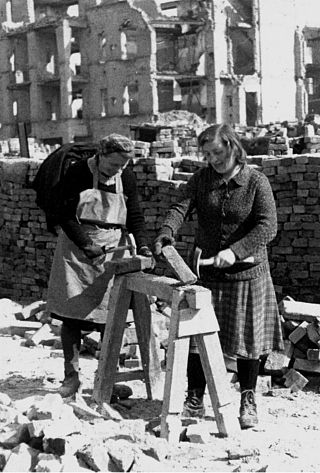
Trümmerfrau were women who, in the aftermath of World War II, helped clear and reconstruct the bombed cities of Germany and Austria. Hundreds of cities had suffered significant bombing and firestorm damage through aerial attacks and ground war, so with many men dead or prisoners of war, this monumental task fell to a large degree on women.
28. Loschwitzer Brücke
Loschwitz Bridge is a cantilever truss bridge over the river Elbe in Dresden the capital of Saxony in Germany. It connects the city districts of Blasewitz and Loschwitz, two affluent residential areas, which around 1900 were amongst the most expensive in Europe. It is located close to Standseilbahn Dresden funicular railway and the world's oldest suspension railway Schwebebahn Dresden, as well as near the Dresden TV tower. The bridge is colloquially referred to as Blaues Wunder. This common name purportedly referred to the bridge's original blue colour and being seen as a technological miracle at the time; it is also understood to carry the cynical connotation referencing the German idiom ein blaues Wunder erleben meaning "to experience an unpleasant surprise", reflecting the skeptical view of contemporary commentators. There is also a bridge in Wolgast known as Blaues Wunder.
29. Castle Eckberg
Eckberg Castle is one of the three Elbe castles and is located on the right slope of the Elbe in Dresden, about 3 kilometers upstream of the Elbe from the city center. West of Eckberg Castle is the Lingner Castle and next to it the Albrechtsberg Castle.
30. Pillnitzer Kamelie
Die Pillnitzer Kamelie ist eine der ältesten in Europa befindlichen Kamelien . Mittlerweile mindestens 247 Jahre alt, hat sie eine Höhe von etwa 8,90 Metern und einen Durchmesser von fast 11 Metern erreicht. Während ihrer von Februar bis April dauernden Blütezeit erscheinen bis zu 35.000 Blüten. Diese sind von karminroter Farbe, ungefüllt und ohne Duft. Die Pflanze befindet sich im Park des Schlosses Pillnitz und wird vor Frösten durch ein fahrbares Gewächshaus geschützt.
31. Garnisonkirche St. Martin
The Garrison Church of St. Martin in Dresden was the garrison church of Albertstadt, which was built as a military town for large parts of the Saxon army. The double church was built in the second construction phase between 1893 and 1900 in a central location of the barracks complex.
32. Freilichtbühne Junge Garde
The Freilichtbühne Großer Garten is a venue in the southeast of the Park Großer Garten in Dresden, Germany. It was created between 1953 and 1955 as the open-air theatre "Junge Garde" on the site of a former gravel pit and opened on 12 August 1955. It offers space for 4,900 spectators.
33. Schloss Pillnitz
Pillnitz Palace is a restored Baroque castle at the eastern end of the city of Dresden in the German state of Saxony. It is located on the right bank of the River Elbe in the former village of Pillnitz. It was the summer residence of many electors and kings of Saxony; it is also known for the Declaration of Pillnitz in 1791.
34. Beyer-Bau
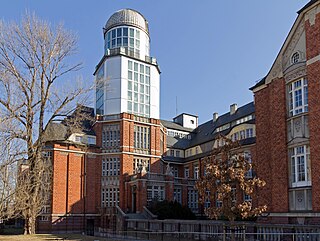
The Beyer Building of the Technical University of Dresden was built between 1910 and 1913 for the Department of Civil Engineering at the Technical University of Dresden by Martin Dülfer. The listed group of buildings still houses the Faculty of Civil Engineering, the Institute of Applied Photophysics in the Department of Physics and the Chair of Astronomy in the Department of Earth Sciences. Striking in the cityscape is the 40-metre-high observatory tower.
35. Blockhaus
In Dresden, the Neustädter Wache on the west side of the Neustadt bridgehead of the Augustus Bridge is called a blockhouse. The free-standing building is located on Neustädter Markt, a few meters from the Goldener Reiter. The architect was Zacharias Longuelune.
36. Bahnhof Dresden-Neustadt
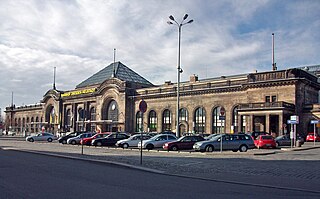
Dresden-Neustadt station is the second largest railway station in the German city of Dresden after Dresden Hauptbahnhof and is also a stop for long-distance traffic. It is the junction for rail traffic on the northern side of the Elbe. It was built in 1901, replacing the Leipziger Bahnhof, which was opened in Leipziger Vorstadt in 1839, and the Schlesischen Bahnhof, which was opened in 1847. The station building in the district of Innere Neustadt was built in the monumental style that was typical of the time, underlining its importance as a stop for long-distance services.
37. Bismarcksäule
The Bismarck Column in Dresden-Räcknitz is a 23-metre-high Bismarck monument that is now used as an observation tower. It is part of the Bismarck myth around 1900 and the associated monument boom of that time.
38. Carte Blanche (Travestie)
The Travestie-Revue-Theater Carte Blanche is a travesty theater in the Dresden district of Äußere Neustadt. The renowned ensemble, which celebrated its 25th anniversary in 2009 as part of the Dresden Film Nights, gained nationwide fame, among other things, through the television program Das Sat.1-Magazin, which was broadcast in the early evening program, when reporters accompanied theater director Zora Schwarz for a week and looked behind the scenes of the theater.
39. Alte Feuerwache Loschwitz
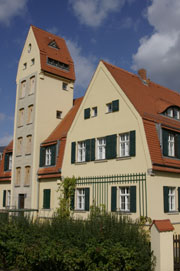
The Old Fire Station Loschwitz is a historic fire station and is now used as a socio-cultural center. The building is located near the Elbe in the Dresden district of Loschwitz, Fidelio-F.-Finke-Straße 4.
40. Albertinum
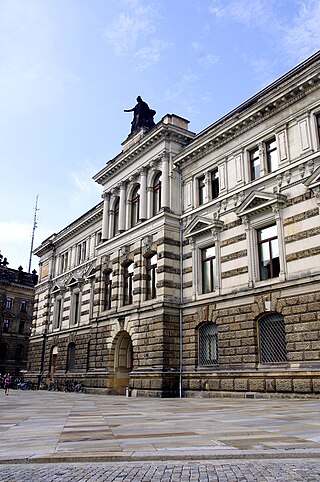
The Albertinum is a modern art museum. The sandstone-clad Renaissance Revival building is located on Brühl's Terrace in the historic center of Dresden, Germany. It is named after King Albert of Saxony.
41. Italienisches Dörfchen
The Italian Village is a restaurant in Dresden, Germany. It is located on Theaterplatz near the Hofkirche, the Zwinger and the Semperoper in the historic area of the city centre. The name refers to an earlier development at this point.
42. Long Arcade
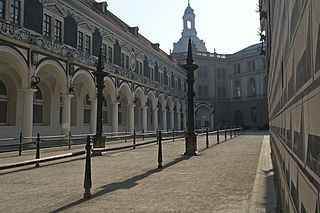
The Stallhof in Dresden is part of the building complex of the Royal Palace and served as a venue for large equestrian tournaments. The Stallhof was built from 1586 for Elector Christian I, presumably according to the designs of Giovanni Maria Nosseni. The Renaissance complex is one of the oldest courtly tournament grounds in the world that has been preserved in its original design. Today, the Stallhof is used for cultural events such as the medieval Christmas market. Occasionally, equestrian tournaments and theatre events are still held here.
43. George gate
The Georgentor or the Georgenbau is the original city exit from Dresden to the Elbe bridge. It is located in the Inner Old Town on Schloßplatz between the Residenzschloss and the Stallhof. This first Renaissance building in Dresden was initiated by George the Bearded, who had the former city gate of Dresden's only Elbe bridge at the time converted into the Georgentor from 1530 to 1535. Today, the building impresses with its representative façade in the monumental neo-Renaissance style.
44. Coselpalais
The Coselpalais is a palace in the Inner Old Town in Dresden, Germany. With the address An der Frauenkirche 12, it is located northeast of the Frauenkirche at the junction of Salzgasse with this side square of Neumarkt.
45. Neue Synagoge Dresden
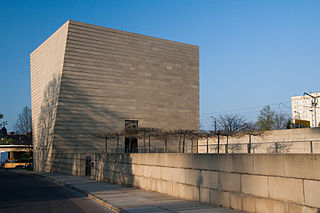
The New Synagogue is a Jewish congregation and synagogue, located at Hasenberg 1, in the old town of Dresden, Germany. The edifice was completed in 2001 and designed by architects Rena Wandel-Hoefer and Wolfgang Lorch. It was built on the same location as the Semper Synagogue (1839–1840) designed by Gottfried Semper, which was destroyed in 1938, during the Kristallnacht.
46. Goldener Rathausmann
The Golden Town Hall Man is a sculpture on the tower of the New Town Hall in Dresden. It symbolizes Hercules, who pours out his cornucopia with one hand and points with his raised hand to the beauties of the city at his feet.
47. Kreisgrabenanlage Dresden-Nickern
The Dresden-Nickern circular ditch system is an early complex of at least four independent circular ditch systems in the Dresden district of Nickern in the area around the Gebergrund. The facilities are located on several excavation areas that were created before the construction of a feeder road to the A 17 motorway to explore the route.
48. Mathematisch-Physikalischer Salon
The Mathematisch-Physikalischer Salon in Dresden, Germany, is a museum of historic clocks and scientific instruments. Its holdings include terrestrial and celestial globes, astronomical, optical and geodetic devices dating back to the 16th century, as well as historic instruments for calculating and drawing length, mass, temperature and air pressure.
49. Alter Jüdischer Friedhof
The Old Jewish Cemetery in Dresden is the oldest preserved Jewish cemetery in Saxony. It is located north of Bautzner Straße on Pulsnitzer Straße in the Neustadt, near the Martin Luther Church and, with 3500 square meters, is one of the smallest cemeteries in Dresden. It is protected as a cultural monument.
50. Neue Mensa

The Neue Mensa in the Dresden district of Räcknitz is a canteen building for the Technical University of Dresden, it is operated by the Studentenwerk Dresden. The building is located at Bergstraße 51. After the renovation of the "Alte Mensa" in 2007, the name Mensa Bergstraße was also used; up to 4,500 portions of food were served daily in five dining halls. In total, the canteen had 60 employees.
51. Sphinx
Belvedere is the name given to four pleasure palaces that stood one after the other on the northeast corner of Brühl's Terrace in Dresden. The fourth and last Belvedere was built in 1842 in the style of the first Semper Opera House, which fell victim to the war in 1945, and a reconstruction was offered by a citizen in 2008 and 2016.
52. Erich-Kästner-Museum
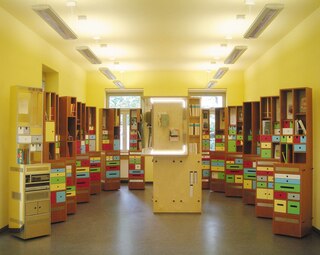
The Erich Kästner Museum is a literary museum in Dresden, Germany. The museum covers the life and writings of German children's author Erich Kästner and is based in the Villa Augustin building which had belonged to Kästner's uncle. The museum is notable for its architecture, which was designed to be semi-mobile and fit within a single room, close to where Kästner had grown up in Dresden's inner new town.
53. Schillerhäuschen
The Schiller House is a literature museum in Dresden dedicated to the important German poet and playwright Friedrich Schiller. It was set up in a small building where Schiller is said to have stayed and belongs to the network of museums of the city of Dresden.
54. Martin-Luther-Kirche
The Martin Luther Church in Dresden's Neustadt is a church built in the late 19th century. It stands on Martin-Luther-Platz, which was built from 1879 onwards, in the middle of numerous Wilhelminian style houses.
55. Gedenkstätte Bautzner Straße Dresden
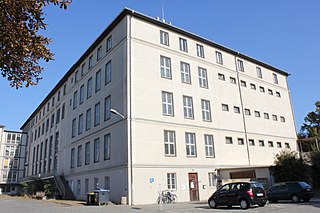
The Bautzner Straße Dresden Memorial is a memorial for the victims of the GDR Ministry of State Security (MfS) in Dresden, the capital of Saxony. It is the only remand prison of the "Stasi" in the Free State that has been preserved in its original form and is accessible to visitors. Both the perspective of former political prisoners on remand and that of former secret service employees are addressed in the exhibition. The memorial is supported by the association "Erkenntnis durch Erinnerung e. V."
Wikipedia: Gedenkstätte Bautzner Straße Dresden (DE), Website
56. Bürgerwiese
The Bürgerwiese, which is about ten hectares in size, is a landscape garden in Dresden. The dimensions of the Bürgerwiese, located southeast of the old town centre, are 850 metres long and 80 to 100 metres wide. It is the oldest green space in Dresden.
57. Galerie Neue Meister
The Galerie Neue Meister in Dresden, Germany, displays around 300 paintings from the 19th century until today, including works from Otto Dix, Edgar Degas, Vincent van Gogh and Claude Monet. The gallery also exhibits a number of sculptures from the Dresden Sculpture Collection from the same period. The museum's collection grew out of the Old Masters Gallery, for which contemporary works were increasingly purchased after 1843.
58. Alte Mensa
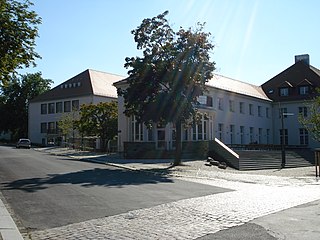
The Alte Mensa Dresden is a canteen in Dresden, Germany. It is located on the main campus of the Technical University of Dresden in the Dresden district of Räcknitz. The northern main entrance leads to Mommsenstraße and the side entrances to the west to Helmholtzstraße and to the east to Dülferstraße. The building, which opened in 1925, is operated by the Studentenwerk Dresden and, according to its own statements, is the oldest canteen in Germany. Immediately adjacent is the former rectorate building at Mommsenstraße 15 as an example of socialist classicism.
59. Dreikönigskirche
The Dreikönigskirche is a Lutheran church located in the Innere Neustadt of Dresden, Germany. It is the centre of a parish, and a community venue called Haus der Kirche. The church is a listed cultural monument of Dresden.
60. Neptunbrunnen
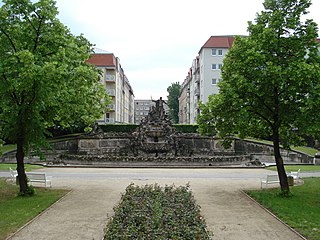
The Neptune Fountain is the most important Baroque fountain in Dresden. It is located in the Friedrichstadt district in the former French Garden of the Palais Brühl-Marcolini, today's Friedrichstadt Hospital. The fountain was built between 1741 and 1746 by Lorenzo Mattielli according to plans by Zacharias Longuelune. The reliefs "Romulus and Remus" (Rome) and "Pyramids and Sphinx" (Egypt) on the pedestals of the Neptune Fountain were created or renewed by the Dresden sculptor Franz Schwarz around 1890.
61. Hungersteine
A hunger stone is a type of hydrological landmark common in Central Europe. Hunger stones serve as famine memorials and warnings and were erected in Germany and in ethnic German settlements throughout Europe in the 15th through 19th centuries.
62. Heilandskirche
The Church of the Redeemer is an Evangelical Lutheran church with a parish and parish hall in Dresden, in the district of Cotta. The entire complex is a striking example of Dresden's reform architecture and is a listed building.
63. Kraszewski-Museum
The Kraszewski Museum is a literary museum in Dresden, Germany, dedicated to the Polish writer, painter, historian and composer Józef Ignacy Kraszewski (1812–1887). It was set up in 1960 in the building he lived in during part of his more than 20 years in exile in Dresden.
64. Friedenskirche
The Evangelical Lutheran Church of Peace is a listed sacred building in the Dresden district of Löbtau. The church, which was built with the incorporation of the remains of the previous building, which was largely destroyed in 1945, is now one of the 41 surviving emergency churches by the architect Otto Bartning in Germany. Together with the Church of Hope, the Church of Peace has been part of the Evangelical Lutheran Church of Peace and Hope since 1999.
65. Güntzwiesen
The Güntzwiesen are a green space and urban open space in Dresden. They are the location of the Dresden Stadium, named after Rudolf Harbig, the home of SG Dynamo Dresden. The Güntzwiesen bear their name after Justus Friedrich Güntz, who in 1856 set up a foundation (Güntzstiftung), whose funds were later used to design the meadows, among other things. Its northern part has been called Cockerwiese since 2016, after this name had already existed colloquially since Joe Cocker's big concert on June 2, 1988.
66. Heimat- und Palitzsch-Museum Prohlis
The Palitzsch Museum is one of the museums of the city of Dresden. It is dedicated to the 7000-year settlement history of today's Prohlis district and to the Prohlis farmer and scientist Johann George Palitzsch, who in 1758 was the first to see Halley's Comet, which was eagerly awaited at the time, and thus became known throughout Europe.
67. Palais Brühl-Marcolini
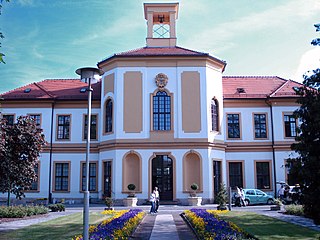
The Palais Brühl-Marcolini is a garden palace built from 1727 onwards in the suburb of Ostra near Dresden, which was laid out from 1670 in today's Friedrichstadt district. Today, the palace and later extensions and new buildings on its property are home to the Dresden-Friedrichstadt hospital. The Palais Brühl-Marcolini is not to be confused with Marcolini's hunting lodge in the Waldschlösschen district and the former Palais Brühl on Brühl's Terrace.
68. Heilig-Geist-Kirche
The Evangelical Church of the Holy Spirit is a listed sacred building in the Blasewitz district of Dresden and today one of the three places of worship of the Evangelical Lutheran parish of Dresden-Blasewitz.
69. Weinbergskirche
The Weinbergskirche is a sacred building built in the 20th century in the Saxon state capital Dresden. It lies in the Trachenberge district and belongs to the Evangelical Lutheran parish of Dresden-Trachau. It is not to be confused with the baroque vineyard church in Dresden's Pillnitz district.
70. Straßenbahnmuseum Dresden e.V.
The Dresden Tram Museum is a collection of museum trams that used to be in regular service in the Dresden metropolitan area. Most of them are former vehicles of the Dresden tramway. This transport museum is supported by the association "Straßenbahnmuseum Dresden e. V.", whose members restored and look after the more than 30 cars in the collection.
71. Schloss Albrechtsberg
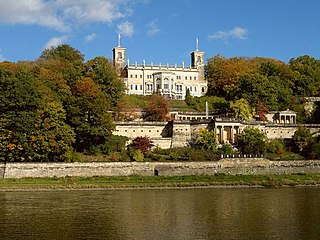
Albrechtsberg Palace or Albrechtsberg Castle is a Neoclassical stately home above the Elbe river in the Loschwitz district of Dresden. It was erected in 1854 according to plans designed by the Prussian court and landscaping architect Adolf Lohse (1807–1867) at the behest of Prince Albert, younger brother of the Prussian king Frederick William IV.
72. Dresden City Museum
Dresden City Museum is the central city museum for the German city of Dresden. Its displays tell the 800-year story of the city and is the largest and most important of the Dresden State Museums. Its art collections split off in 2000 to form the Dresden City Art Gallery, but both the Art Gallery and the Museum are housed in Dresden's Landhaus.
73. Christuskirche
The Christuskirche is an Evangelical Lutheran church in the Klotzsche district of Dresden, Germany. It was built as the second church in the village from 1905 to 1907 and has been one of Dresden's churches since Klotzsche's incorporation in 1950.
74. Russian Orthodox Church
The St. Simeon of the Wonderful Mountain Church is a Russian Orthodox church in the German city of Dresden. It was designed by Harald Julius von Bosse and Karl Weißbach and built from 1872 to 1874. It is dedicated to Simeon Stylites the Younger.
Wikipedia: St. Simeon of the Wonderful Mountain Church (EN), Website, Flickr
75. Markuskirche
St. Mark's Church is a Protestant church in the Dresden district of Pieschen. It stands on St. Mark's Square between Bürgerstraße, Torgauer and Osterbergstraße. The church is named after the evangelist Mark.
76. Neustädter Markthalle
The Neustädter Markthalle in Dresden is a market hall first opened on 7 October 1899 on Metzer Straße, corner of Hauptstraße in Neustadt. After a major renovation, the listed hall was reopened as a shopping centre in 2000.
77. Alaunplatz
Alaunplatz is a square in the Outer Neustadt district of Dresden, Germany. It is located between Kamenzer Straße and Tannenstraße as well as Bischofsweg. Alaunplatz is connected to Albertplatz via the eponymous Alaunstraße and borders the pub district of the Äußere Neustadt in the north. Line 13 of the Dresden tram has a stop "Alaunplatz" there.
78. Schlosskirche Lockwitz
The Schlosskirche Lockwitz is a late Gothic, listed sacred building in the Dresden district of Lockwitz. It is the only Evangelical Lutheran church in Dresden that is structurally connected to a castle. The Castle Church is the main church of the parish of the same name.
79. Große Liegende
Sachsenplatz is a central square in Dresden on the southern side of the Elbe. It lies on the border between the districts of Pirnaische Vorstadt and Johannstadt. It was built between 1875 and 1881 in connection with the construction of the Albert Bridge. Sachsenplatz is connected to nearby Güntzplatz via Sachsenallee and to Rosa-Luxemburg-Platz via the Albert Bridge.
80. Matthäus-Kirche
St. Matthew's Church is an Evangelical Lutheran parish church in the Friedrichstadt district of Dresden, Germany. The baroque church, built in the 18th century, was severely damaged in 1945 and rebuilt in the post-war period. It is registered as an architectural monument in the list of monuments of the city of Dresden.
81. Leuschnerstein
The Karswald is a forest area interspersed with meadows and swampy areas east of the Saxon state capital Dresden. The approximately 1300-hectare forest is surrounded by the villages of Fischbach, Arnsdorf, Kleinwolmsdorf, Großerkmannsdorf, Eschdorf, Dittersbach, Wilschdorf and Rennersdorf. The Karswald includes the historic forest areas of Fischbacher Holz, Großer and Kleiner Carswald, Künzelwald, Harthe, Oberbast, Mittelbast, and Niederbast, as well as private forests.
82. Brühlscher Garten
Today, the Brühl Garden is only called the eastern part of the Brühl Terrace in Dresden on the Maiden's Bastion, the site of the former Belvederes (I - IV), but originally the entire garden on the Brühl Terrace. He was one of Brühl's glories.
83. Nazarethkirche
Die Nazarethkirche in Dresden-Seidnitz ist eine Gottesdienststätte der Evangelisch-lutherischen Kirchengemeinde Dresden-Gruna-Seidnitz. Das unter Denkmalschutz stehende sakrale Ensemble befindet sich in Altseidnitz 12 im Stadtteil Seidnitz.
84. Museum für Völkerkunde Dresden
The Dresden Museum of Ethnology contains an ethnographic collection with more than 90,000 artefacts from all parts of the earth. It is part of the Dresden State Art Collections. Founded in 1875, the museum presents continually changing exhibitions in the Japanisches Palais, a Baroque building complex in Dresden, Germany.
85. Akademie für berufliche Bildung
The teaching building at Blochmannstraße 2 is located in the Pirnaische Vorstadt in Dresden. The building in Blochmannstraße was built in 1911/1912 according to plans by the city planning officer Hans Erlwein as a new educational building for the expansion of the Ehrlichsche Stift. After its partial destruction in the air raids in the final phase of the Second World War, reconstruction took place in 1950/1951 in the style of socialist classicism of "peculiar, sober beauty" using the existing building fabric in "based on the traditional Dresden building method". A sandstone rustica and a vertical structuring by pilaster strips on the upper floors are hallmarks of the building.
86. Festtagstür der Jakobikirche
The Jakobikirche was a High Rhenish Neo-Romanesque church built in Dresden between 1898 and 1901 to plans by Jürgen Kröger. It was destroyed by bombing in the Second World War and its ruins were demolished in 1953.
87. Käseglocke
Käseglocke is the colloquial name of a building built in 1927/28 on the Postplatz in Dresden as a waiting hall, which served with interruptions from 1994 to 2013 as a service point of the Dresdner Verkehrsbetriebe (DVB). The pavilion-like building is a listed building and functions as a café.
88. Dinglingerbrunnen
The Dinglinger Fountain is a listed Baroque fountain in Dresden, Germany. It is considered the oldest preserved courtyard fountain in the Saxon state capital. It is named after the court jeweller and goldsmith of Augustus the Strong, Johann Melchior Dinglinger, who had it made for himself.
89. Staatliche Schlösser, Burgen und Gärten Sachsen
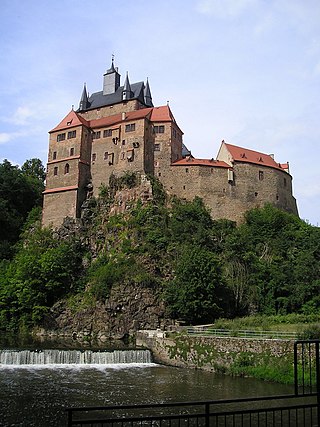
The State Palaces, Castles and Gardens of Saxony is a state-owned company with its head office in Dresden. It belongs to the Saxon State Ministry of Finance and has the aim of preserving Saxon cultural heritage whilst respecting cultural and conservation needs. The state-owned company manages several palaces, castles and parks in the Saxony. These include the Zwinger in Dresden, the Albrechtsburg in Meissen and Kriebstein Castle.
Wikipedia: State Palaces, Castles and Gardens of Saxony (EN), Website
90. Landhaus
The Landhaus is a historic building in Dresden, Germany. Designed to house the Saxony region's Landstand, it was built in the Baroque style between 1770 and 1776 by Friedrich August Krubsacius on the site of the former Palais Flemming-Sulkowski. In September 1775 the Obersteuerkollegium moved into it and in October the Landstand first sat there. It now houses the Dresden City Museum and the Dresden City Art Gallery.
91. Stadtbezirksamt Altstadt
The Stadthaus Dresden on Theaterstraße is a building of the Dresden city administration as an extension of the town hall. It was built until 1923 in the rare expressionist architectural style mixed with traditional style elements. Despite bomb hits in 1944 and 1945, it is one of the surviving buildings of Dresden's pre-war modernism. The architect of the house is Ludwig Wirth.
92. Hohenplauensches Wasserhaus (Fundamentreste)
The Hochplauensche Wasserhaus was a building in Plauen near Dresden for the collection and purification of water from the mill ditch of the Bienertmühle for forwarding by means of wooden pipes (pipes) as so-called pipe water to the city of Dresden. In addition to the Hochplauen Röhrwasser, there was also the Mittel- and Niederplauensche Röhrwasser, which was taken from the Weißeritzmühlgraben at the former fulling mill and forwarded.
93. Botanischer Garten
The Botanischer Garten der Technischen Universität Dresden, also known as the Botanischer Garten Dresden or Dresden Botanical Garden, is a botanical garden maintained by the Dresden University of Technology. It is located in the north-west section of the Großer Garten at Stübelallee 2, Dresden, Saxony, Germany. It is open daily without charge.
94. Dresdner Brettl

The Theaterkahn is a former barge and since 1994 the venue of the Theater Dresdner Brettl. It is located below the Augustus Bridge on Dresden's Terrassenufer, in the center of Dresden. The theatre has space for 170 spectators and, as a professional repertory theatre, plays around 300 performances a year.
Wikipedia: Theaterkahn Dresden (DE), Website, Twitter, Facebook
95. Fernmeldemuseum Dresden
The Telecommunications Museum Dresden is a technology museum operated by the Interessengemeinschaft Historische Fernmeldetechnik e. V. in Dresden with a focus on telephony and telegraphy. It is located in the Telekom building on Dresden's Postplatz.
96. Annenkirche
Anne's Church is named in honour of Anne of Denmark, Electress of Saxony. The original 1578 church was destroyed by Prussian troops in 1760 during the Seven Years' War. The new church was opened in 1769.
97. Alte Zionskirche
The Zionskirche is the name given to two Evangelical Lutheran church buildings in the Südvorstadt district of Dresden. The first, the Alte Zionskirche, was built by Schilling & Graebner from 1908 to 1912. This building was hit and badly damaged by fire during the bombing in February 1945. A temporary roof was later added and it is now preserved as a ruin, housing a lapidarium with 3000 sculptures. The parish, meanwhile, was housed in a barracks next to the ruins until the first stone of a new building, the Neue Zionskirche, was laid on Bayreuther Straße on 5 June 1981, as a gift from the Church of Sweden. With its construction overseen by Eberhard Burger, the new building was inaugurated on 31 October 1982.
98. Sternwarte
The observatories of the former Manfred von Ardenne Research Institute are two observatories that were assigned to the former Manfred von Ardenne Research Institute. The older of the two is located in the Dresden district of Weißer Hirsch (Plattleite 27) and has been open to the public again since 2007. The younger of the two is located near the private home of the von Ardenne family in the Oberloschwitz district (Zeppelinstraße 7) and is not open to the public.
Wikipedia: Forschungsinstitut Manfred von Ardenne – Sternwarte (DE)
99. Anton dem Guitigen
The King Anton Monument is a monument to King Anton (1755–1836) of Saxony in the form of a larger-than-life portrait bust on a natural stone pedestal, which stands on Hohenthalplatz in Dresden's Friedrichstadt.
100. Pastor-Roller-Kirche
The Pastor Roller Church in Dresden is the parish church of the Evangelical Lutheran parish of Weixdorf. You can see it in the north of Dresden in the district of Lausa, which belongs to the village of Weixdorf. It is named after Samuel David Roller (1779–1850), who was a pastor in Lausa from 1811 until his death. In 1816 he confirmed the future portrait and history painter Wilhelm von Kügelgen in the church, who erected a literary monument to Roller in his childhood memoirs of an old man, published posthumously in 1870.
Share
Disclaimer Please be aware of your surroundings and do not enter private property. We are not liable for any damages that occur during the tours.
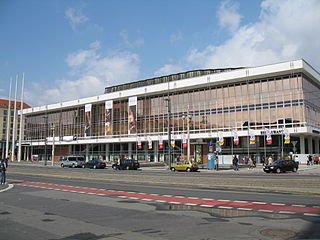

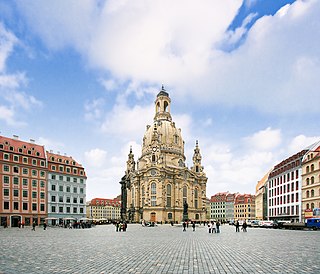
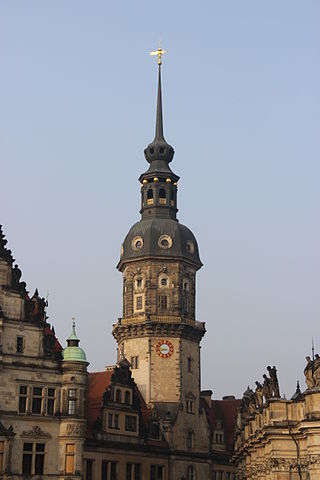
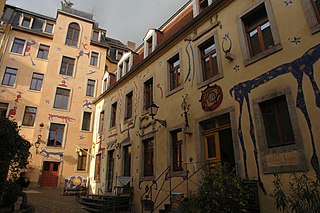
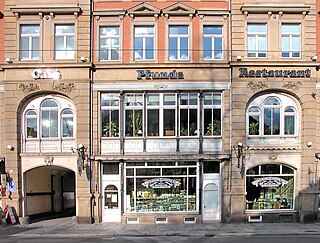



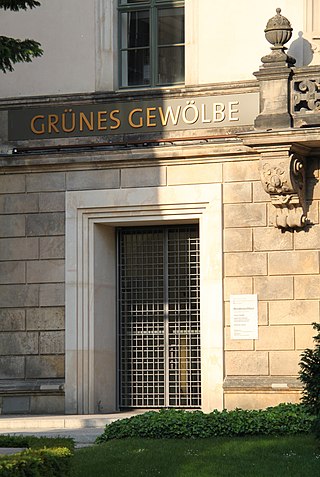
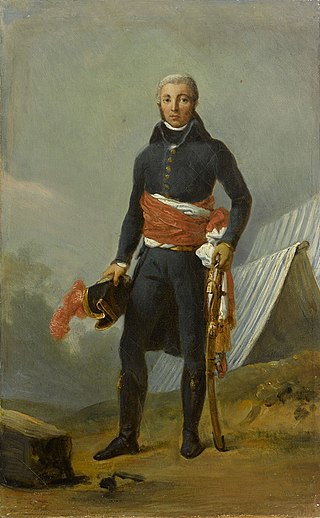

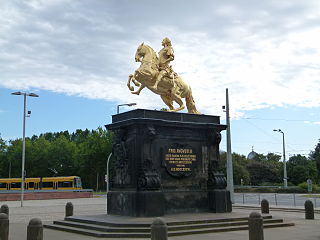
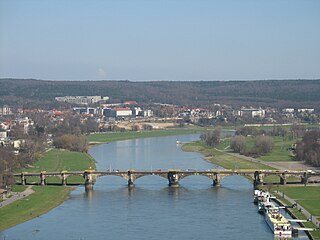
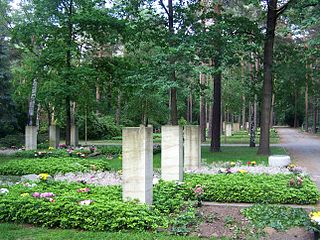

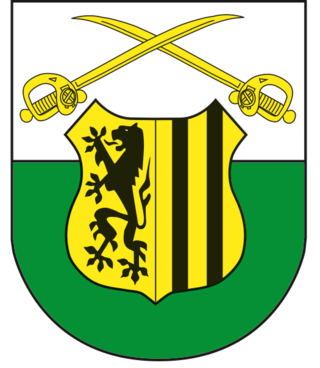
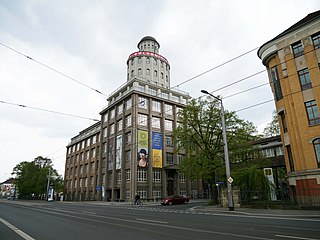
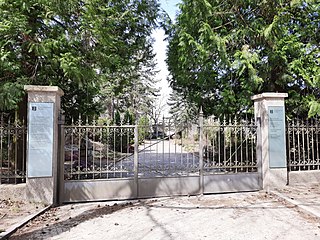
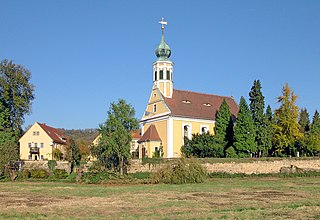
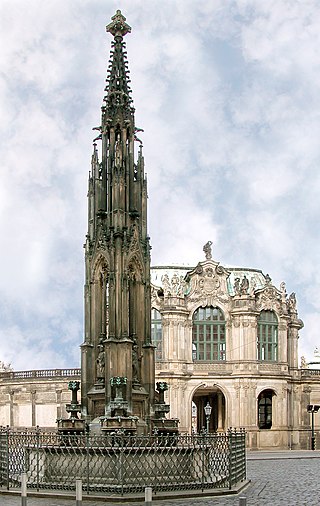

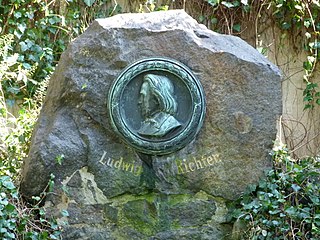
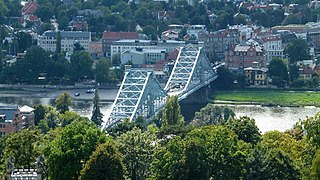
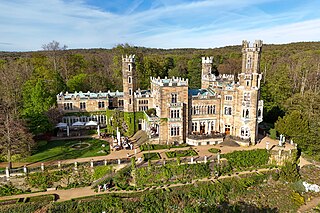
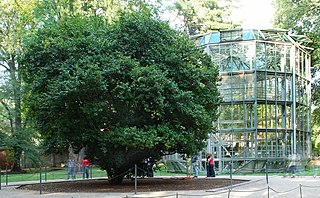
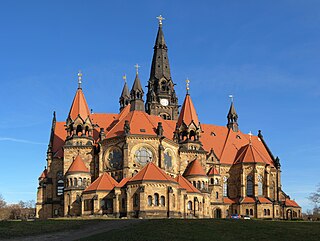
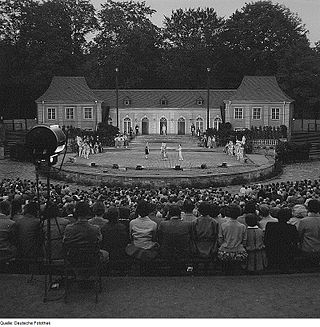
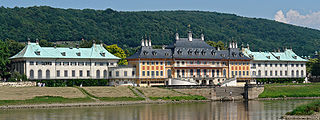

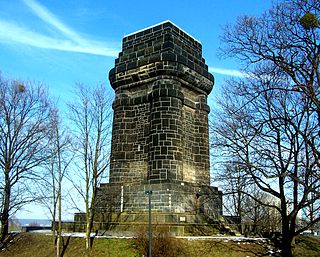
.jpg)
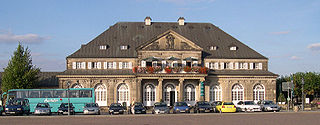
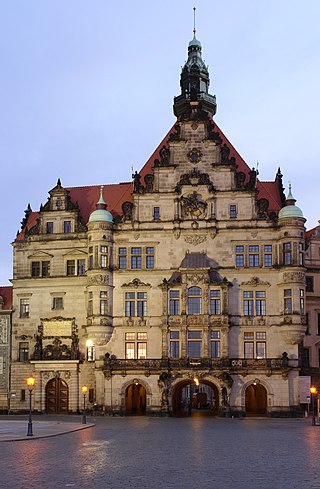
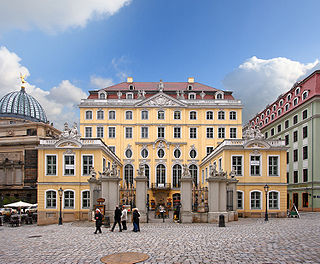

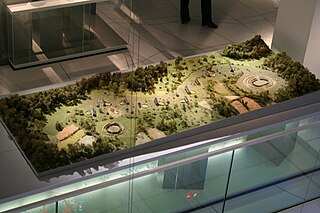
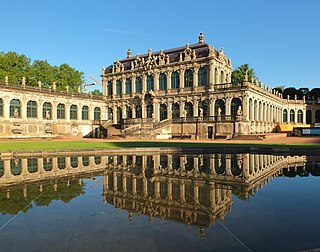
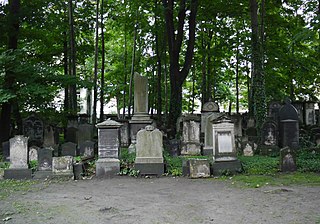
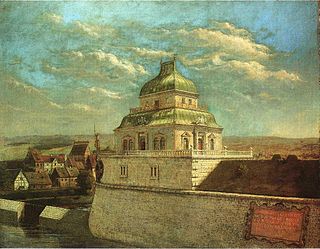
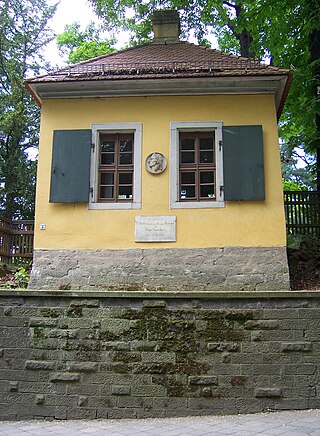
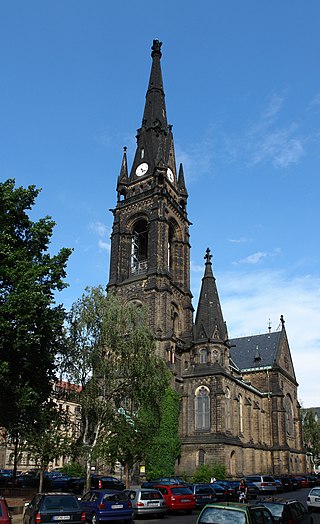
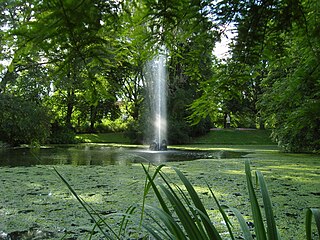
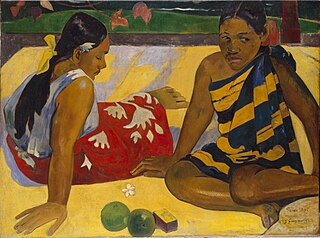
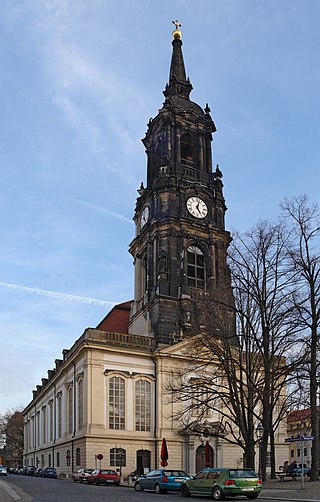

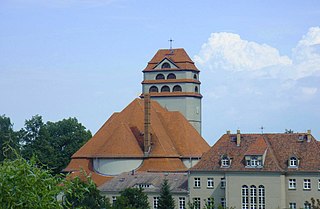

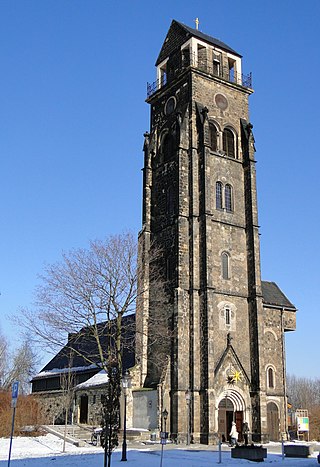
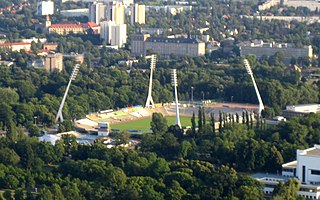

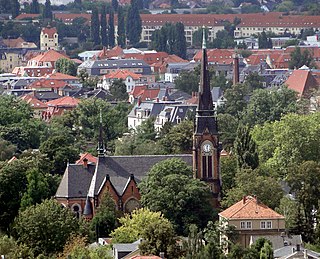
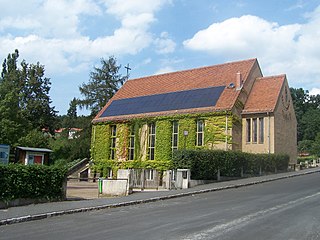


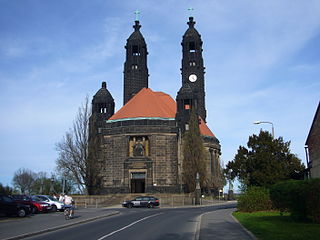


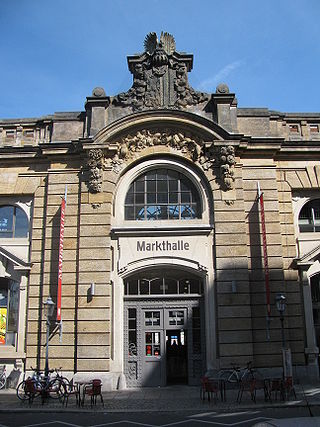
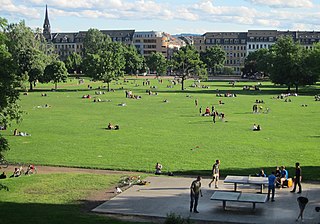

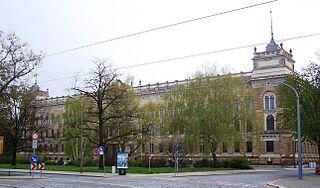
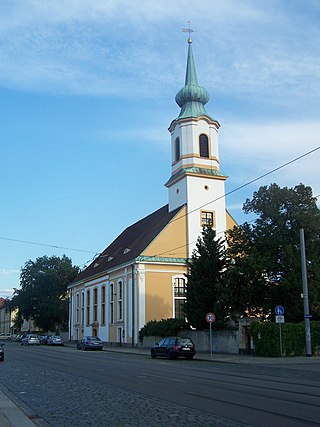
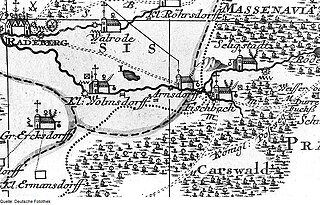

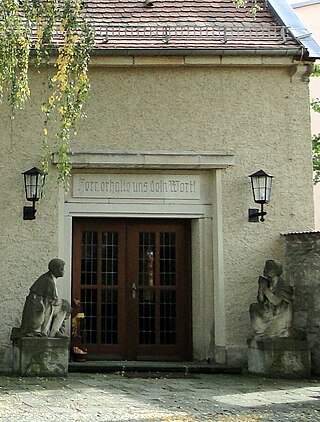
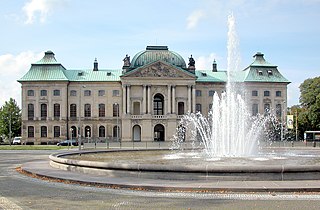
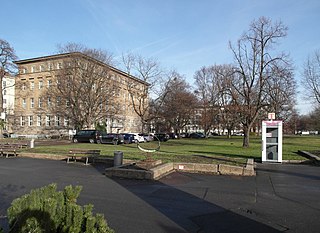

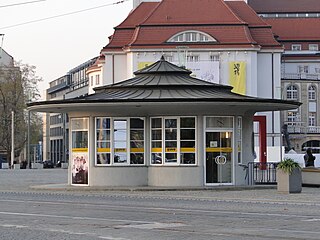
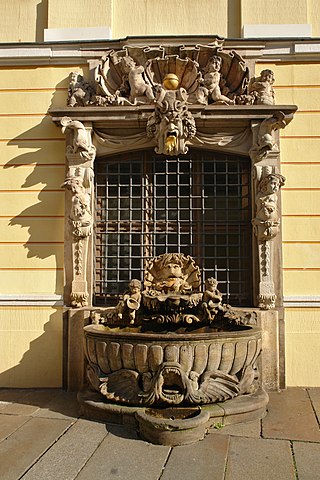
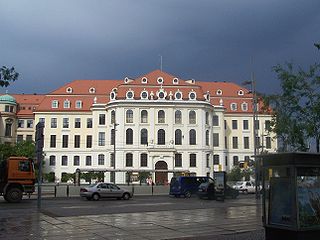

.jpg)
